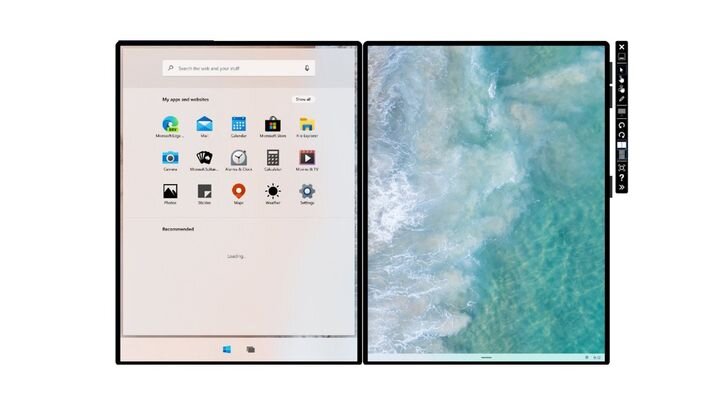![Dual screen CAD is coming [Source: SolidSmack]](https://fabbaloo.com/wp-content/uploads/2020/05/image-asset_img_5eb08b9057dba.jpg)
You would think this article is from a decade or two ago, but no. It’s really about dual-screen and CAD software using dual-screens… but not like you’re used to.
This week, Microsoft released the preview SDK for their dual-screen Surface Duo, with the Window 10X version coming next month. Along with this, they’re introducing new web standard proposals for web developers to create dual-screen experiences that run on Android and Windows 10X.
Now, dual-screen mode for CAD applications isn’t anything new – we’ve been able to use multiple screens for years. It allows us to use one screen for the application and keep the other apps, toolbars, and distraction to the other. However, while CAD apps are able to make use of two monitors slapped together, they don’t have a dual-screen experience — this is what makes the Windows 10X SDK preview quite something, especially when you consider how it could affect your workflow in and across 3D CAD applications.
Zac Bowden took to Twitter to share three examples of the UI/UX. In the first video, notice the (somewhat) fluid and adaptive nature of the navigation and app switching.
Here's a quick look at some of the (unfinished) navigation gestures that are part of the Surface Duo. This build is pretty buggy, but still interesting to see. pic.twitter.com/Jra1xVfZl2
— Zac Bowden (@zacbowden) January 22, 2020
In the second, he shows a phonecall and messaging, but notice the overlay and how elements move out of the way of others.
Here's the lock screen UI with some phone-call action thrown in. pic.twitter.com/ERDkMl7cS3
— Zac Bowden (@zacbowden) January 22, 2020
It may not seem like much but, according to the the patent published by Microsoft last October, there’s much more planned for dual-screen UI/UX. In one portion describing improved efficiency, it states:
“The example techniques may reduce an amount of time and/or resources (e.g., processor, memory, network bandwidth) that are consumed to provide access to information to a user. The example embodiments may increase efficiency of a computing device that is used to provide access to information to a user. The example techniques may increase user efficiency (e.g., by reducing a number of steps that a user takes to obtain access to information and/or to provide input to an application).”
Read the rest at SolidSmack

